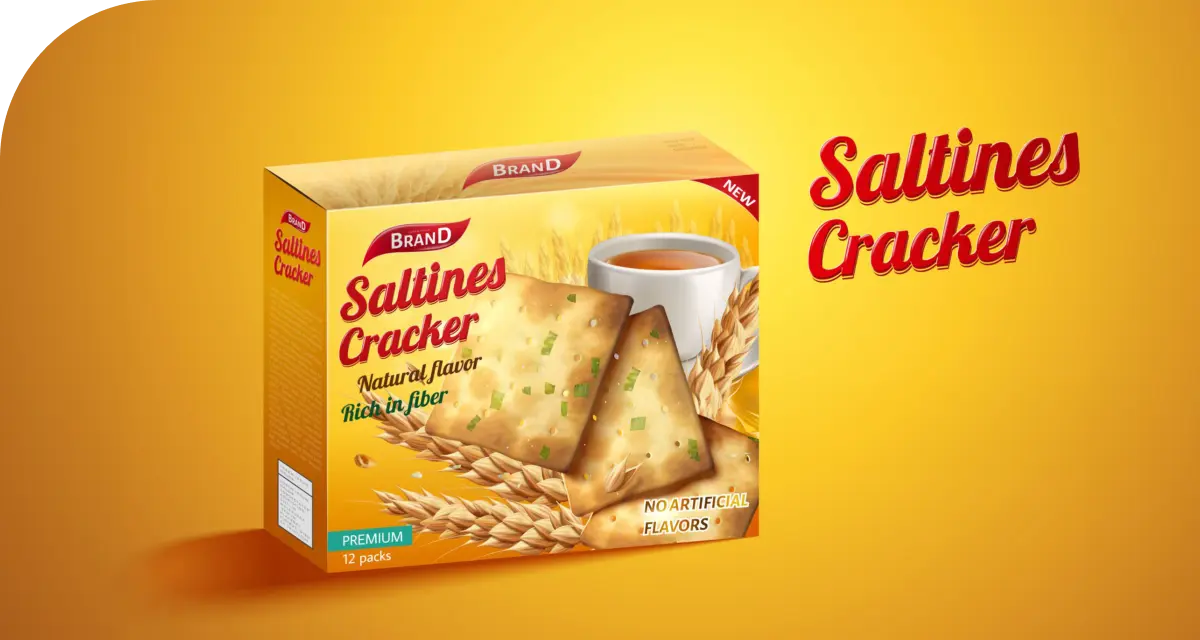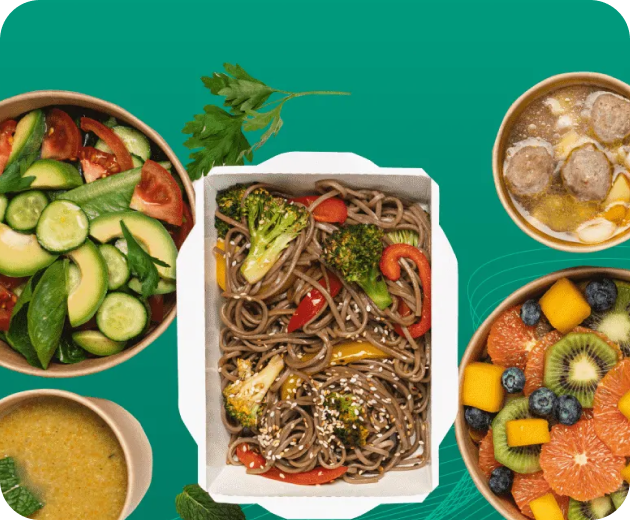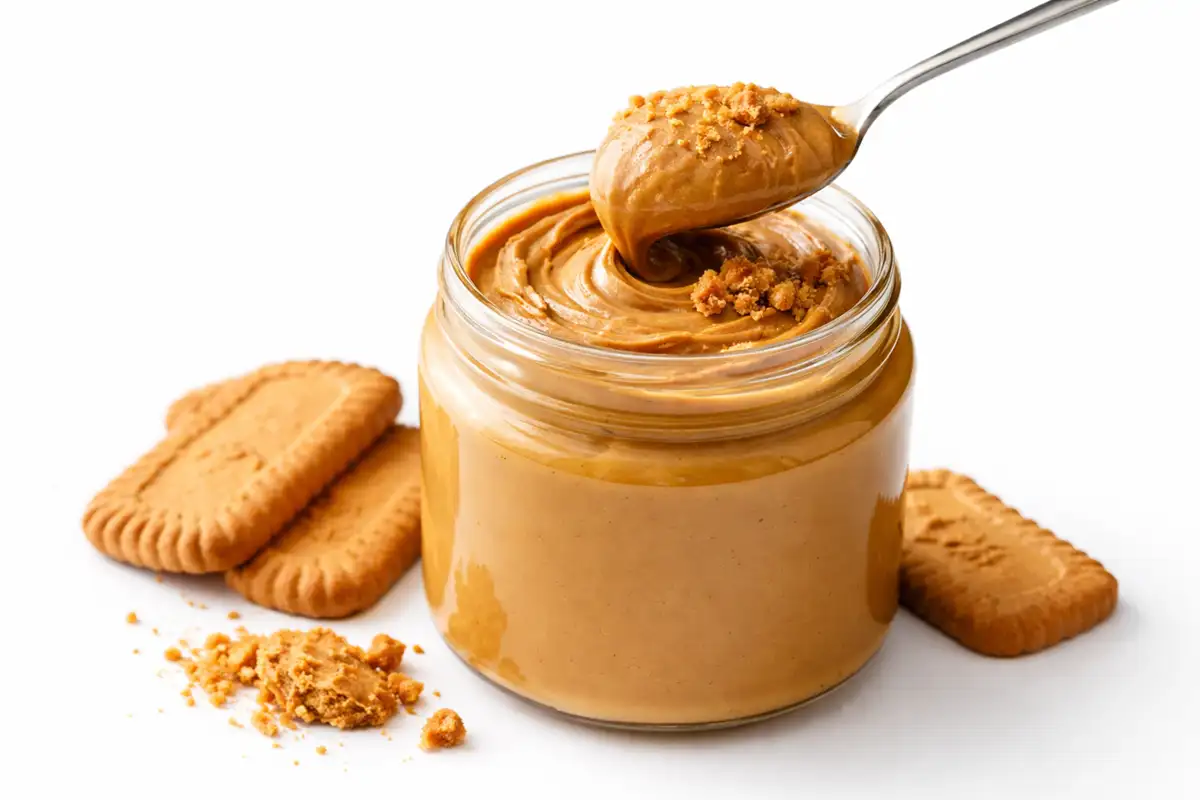Food Branding That Sells: Strategies for CPG Leaders in Retail and Ecommerce
Food branding moves product from shelf to basket faster than price cuts. Shoppers spend USD 3.3 trillion a year on packaged food, and 72 percent say they will switch brands if the pack is easier to handle.
With 89 percent of Europeans preferring carton board to plastic, sustainable design is no longer optional.
In this climate, smart CPG branding, tight Revenue Management, and data‑led promotion planning separate the winners from the rest.
What is food branding?

Put simply, Food branding is the fine art of giving your product a face, a voice, and a promise the buyer remembers at the point of choice.
For global teams juggling CPG marketing and omnichannel distribution, that promise must track across pack‑front claims, mobile content, and every sliver of food ecommerce real estate.
The importance of branding in the food industry
A strong program delivers three commercial wins:
- Shelf cut‑through thanks to consistent Retail Shelf Strategy.
- Trade‑ready stories that speed promotion planning sign‑off and protect margin in quarterly Revenue Management reviews.
- Faster market entry for NPD targeting fast‑moving food trends like gut health or zero‑proof drinks.
Food branding examples
- Street food branding done right: Seoul‑born brand Bunsik stamps a graffiti‑style wordmark on compostable trays and kiosks, matching its spicy menu and youth appeal.
- Luxury food branding: Côte d’Azur chocolatier Alcyon uses matte black cartons, micro‑embossing, and limited drops to charge a 25 percent premium in duty‑free.
- Category crossover: Ca’Vigna marries Wine marketing cues—terroir maps and vintage stamps—to jarred tomato sauce, winning menu placements in trattorias.
All three pair sharp CPG branding with pricing ladders built on disciplined Revenue Management.
Core elements of a strong food brand
| Element | Why it matters | Trade tip |
| Logo & typography | Instant category signal | Keep icon height under 20 mm for tight Retail Shelf Strategy facings |
| Color system | Drives appetite and variant blocking | Use chroma contrast of at least 30 points for instant recognition |
| Pack architecture | Protects product, tells story | Design front-of-pack zones around retailer planogram rules |
| Voice & claims | Carries values into food ecommerce thumbnails | Batch‑test copy in paid social before print run |
| CX loop | Links store, DTC, and CRM | QR codes that push buyers to recipes fuel remarketing and promotion planning |
Brand identity: logo, colors, and packaging
Logo, color, and packaging are the backbone of any food brand. They don’t just show what the product is—they show who the brand is.
Logo
Your logo is your front-of-pack handshake. It should be simple, recognizable, and legible at all sizes—from shelf-ready trays to mobile thumbnails.
For CPG branding, that means testing it across different substrates (matte, gloss, foil) and distribution environments.
Fast-moving categories (like snacks or beverages) often favor wordmarks or bold emblems.
For example, Ben & Jerry’s funky type mirrors its playful tone, while the minimalist logo of Oatly reinforces its edgy, straight-talking vibe.
Color
Color is your appetite trigger and category signal. Use it strategically to reinforce your product’s role, price tier, and personality.
Some common cues:
- Red = hunger, energy, impulse (used in most street food branding)
- Green = health, sustainability, freshness (great for food ecommerce or plant-based CPGs)
- Black & gold = indulgence, heritage, luxury food branding
- White & soft neutrals = purity, calm, ideal for wellness and light snacks
Consistency matters. A buyer scrolling Amazon or browsing a crowded retail aisle must spot your product in under three seconds.
Packaging
Packaging is your silent salesperson. It has to protect the product, pop visually, and tell a tight story at a glance.
The structure (box, pouch, jar), materials (recyclable, premium), and finish (embossed, matte, gloss) all shape perception. For instance:
- Luxury food branding often uses rigid boxes with fine detailing.
- Street food branding leans into kraft, neon, or illustrated wrappers.
- In Wine marketing, bottle shape and label texture are as important as the vintage.
The best packaging integrates logo and color systems across sizes and languages—what looks great on a 500ml bottle should still work on a 30-second TikTok ad.
Five strategies for creative food branding
Succeeding in the crowded food market requires creativity and emotional connections with your consumers.
Here are five concise strategies to inspire your food branding efforts:
1. Spot Micro-Food Trends
Keep an eye on emerging trends, like unique ingredients or cultural flavors, and introduce limited-edition products to match consumer excitement.
This creates urgency while positioning your brand as current and innovative.
Pro Tip: Use tools like Google Trends or social media insights to stay ahead of the curve.
2. Collaborate With Influencers
Influencers are a powerful tool in food marketing, driving visibility and trust through authentic content.
Collaborate with TikTok creators or Instagram foodies to showcase your product’s unique flavors, design, and story.
Their reach and engagement can amplify your brand’s presence, resonating with target audiences in meaningful ways.
By focusing on influencers who align with your brand values, you can craft campaigns that connect emotionally while reinforcing your market position.
Pro Tip: Provide influencers with sensory kits or experiential packages to emphasize your product’s standout qualities.
This enhances their storytelling and integrates seamlessly with broader food marketing strategies.
3. Sync Branding Across Channels
Ensure promotional efforts—from retail packaging to social media posts and B2B presentations—work together seamlessly with a unified calendar.
Consistency in messaging builds trust and boosts brand recognition.
Pro Tip: Use collaborative tools to align your efforts across teams.
4. Introduce Dynamic Pricing Options
Offer varying pack sizes or bundle deals to cater to different markets without losing your brand’s premium appeal.
Dynamic pricing allows you to meet diverse consumer needs while strategically supporting revenue management goals.
By adjusting price points to reflect regional demand, purchasing behavior, or seasonal shifts, you can maximize profitability without compromising consistency.
Pro Tip: Design packaging that aligns with your brand identity across all price tiers, ensuring your product feels cohesive whether sold as a trial pack, family bundle, or premium offering.
5. Host Interactive Tastings
Think virtual events that pair product storytelling with interactive features, like shoppable carts or recipe demos.
This creates memorable experiences that drive sales and brand loyalty.
Pro Tip: Market pre-sale kits for tastings, then share user content to amplify reach.
These strategies tap into trends, innovation, and emotional connections, helping food brands distinguish themselves while driving growth.
Food branding ideas
Limited-Edition Packaging
Create excitement with holiday themes or collaborations, making your product feel exclusive and collectible. Use these releases to align with big marketing pushes.
Interactive Packaging
Add QR codes for recipes, brand stories, or “how it’s made” videos. This boosts consumer engagement and creates a deeper connection to your brand.
Eco-Friendly Materials
Switch to sustainable, recyclable, or compostable packaging to attract eco-conscious buyers. Highlight these efforts clearly on your pack to build trust.
Playful or Nostalgic Themes
Use retro designs or playful elements to connect emotionally with specific demographics like Millennials or Gen Z.
Personalization Options
Allow customers to customize packaging, like Coca-Cola’s name-label campaign, to increase emotional value, especially during gifting seasons.
These ideas help brands stand out, foster loyalty, and resonate with evolving consumer expectations.
Retail vs. online branding approaches
| Aspect | Retail branding | Online branding |
| Packaging | Must pop at two‑meter distance | Optimized for 200 PX thumbnails |
| Taste trigger | Sampling, shelf‑ready trays | Video loops, UGC reviews |
| Story depth | 3‑second eye‑scan | Infinite scroll—ideal for food ecommerce bundles |
| Data loop | POS sell‑through | Pixel‑level A/B for CPG marketing |
Sustainability and ethical branding in food
Transparent sourcing seals loyalty. Declare carbon scores, push suppliers for deforestation‑free inputs, and swap virgin PET for carton board.
Frame these moves inside your retail shelf strategy so eco messaging stays visible even when facings change.
Common mistakes
- Copy‑pasting mass CPG branding to niche extensions without sensory cues.
- Starving Revenue Management dashboards of real‑time food ecommerce returns.
- Treating Wine marketing launches like any other SKU—terroir fans need terroir tales.
The latest trends in food branding
From Static to Multi-Sensory Experiences
Food packaging is evolving to go beyond static designs, offering multi-sensory, personalized, and sustainable experiences that reflect consumer values.
Minimalist Aesthetics and Authenticity
Brands are adopting minimalist aesthetics with raw, hand-drawn elements, emphasizing authenticity and a human touch.
Refillable and Modular Packaging
Refillable and modular designs are gaining popularity, aligning with circular economy goals and appealing to eco-conscious consumers.
AI and Region-Specific Labeling
AI-assisted label layouts enable fast, trend-responsive designs tailored to specific regions and demographics.
Inclusivity Through Multi-Language Packs
Multi-language packaging supports inclusivity, catering to diverse customer bases across global markets.
Premium Appeal with Haptic Finishes
Haptic finishes, such as soft-touch varnishes, elevate the premium feel of products, enhancing their overall appeal.
The Rise of Interactive Packaging
Interactive elements like QR codes, NFC, and AR add gamified layers, loyalty rewards, and deeper engagement, especially for younger, mobile-focused audiences.
Visual Storytelling with Artistic Touches
Artistic frames and marker-style mascots add warmth, humor, and personality, making products more relatable and visually engaging.
Pioneering Sustainability with Zero-Waste Options
Zero-waste formats, edible packaging, and refillable systems not only reduce environmental impact but also strengthen ethical branding.
Driving Engagement with Personalization
Limited-edition designs and personalized packaging drive exclusivity and repeat purchases, connecting emotionally with consumers.
Packaging as a Mirror of Market Evolution
These trends collectively signify a shift toward packaging that connects emotionally, serves practical functions, and aligns with broader food marketing and sustainability advancements.
Conclusion and takeaways
Food branding is a profit driver, not window dressing. Marry bold identity work with rock‑solid retail shelf strategy, agile promotion planning, and margin‑smart revenue management.
Repeat the loop as new food trends surface, and your pack will outsell rivals in store and inside every food ecommerce cart.
FAQs
How can small food businesses build a strong brand?
Start narrow. Nail flavor proof‑points, invest in compact CPG branding elements you can print in short runs, and piggy‑back local street food branding festivals for reach.
How important is brand consistency in food branding?
Crucial. Buyers clock mismatched colors faster than a price hike.
Lock your palette, font stack, and claim set into a living toolkit shared across supply, sales, and CPG marketing.
How do cultural influences affect food branding?
They steer iconography, language, and ritual. A label that thrills Buenos Aires may stall in Bangkok.
Localize graphics, portion cues, and Wine marketing pairings, then feed learnings back into global promotion planning.




